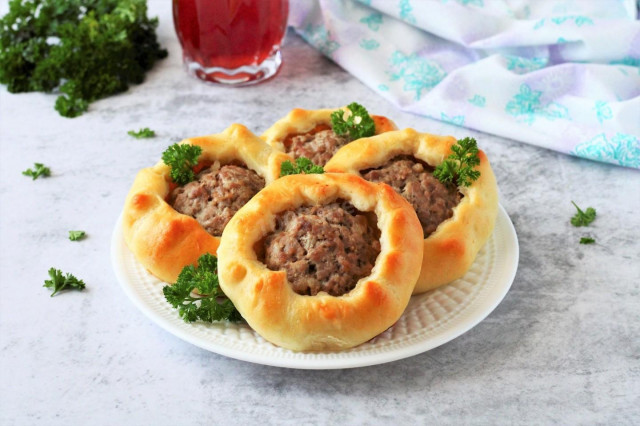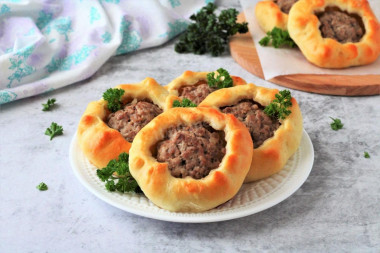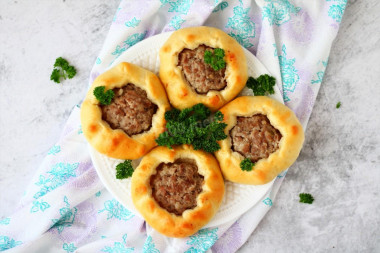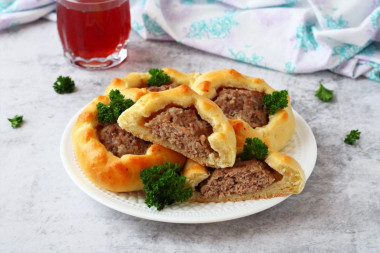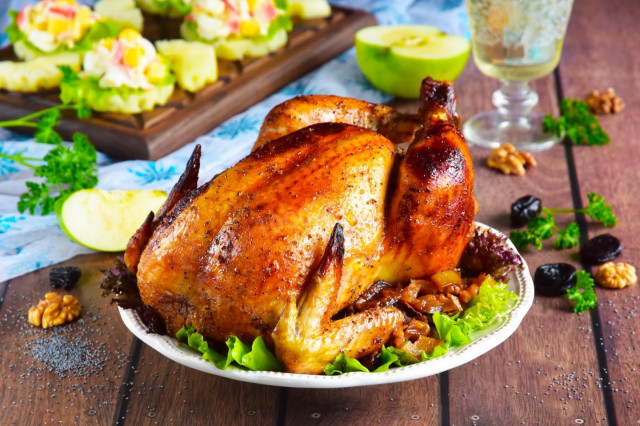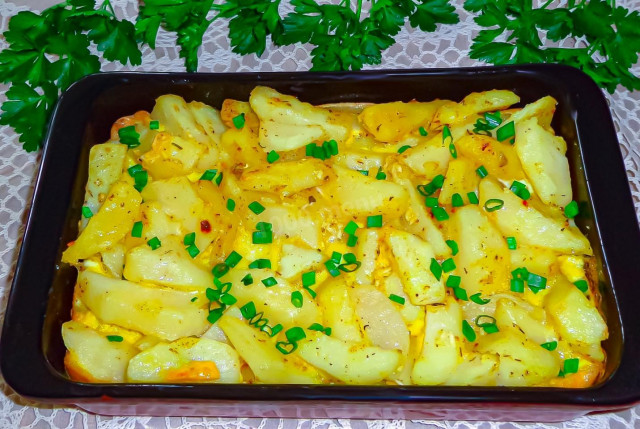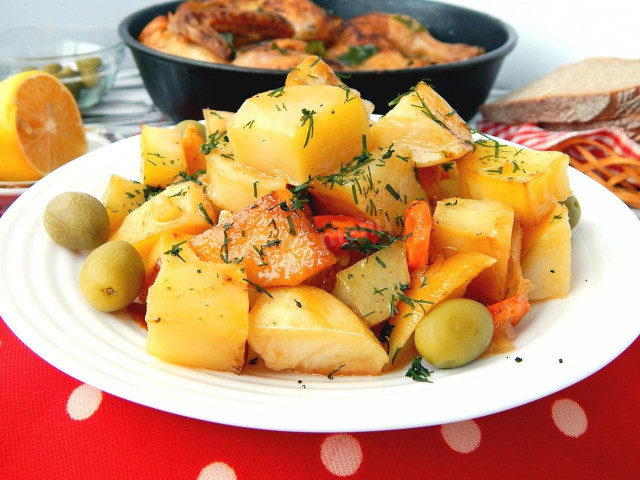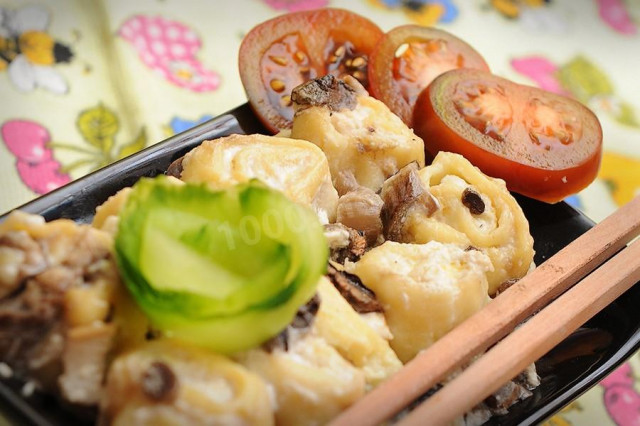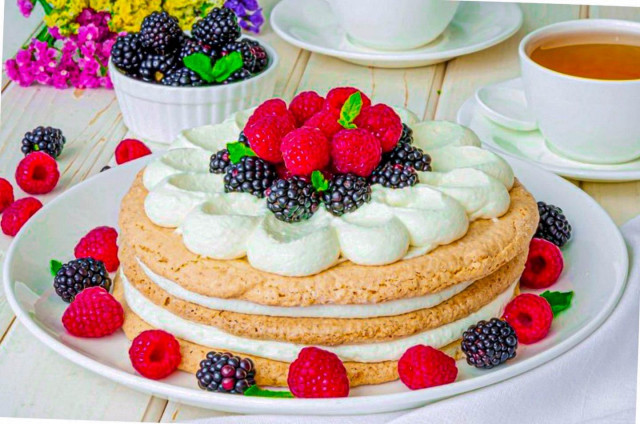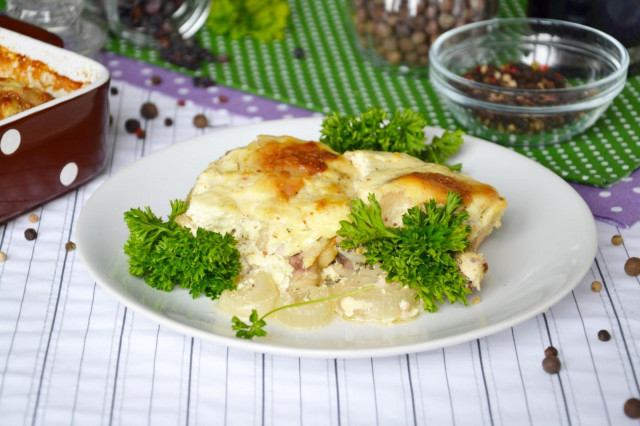Composition / ingredients
Step-by-step cooking
Step 1:
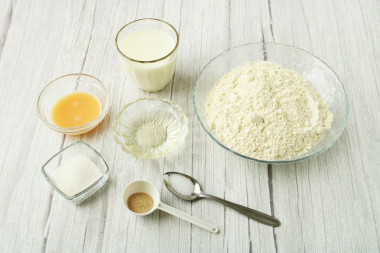
How to make an open pie? Measure out the necessary ingredients for the dough. They should be at room temperature. Milk is suitable for any fat content. Take flour of the highest or first grade. Vegetable oil is better to use odorless.
Step 2:
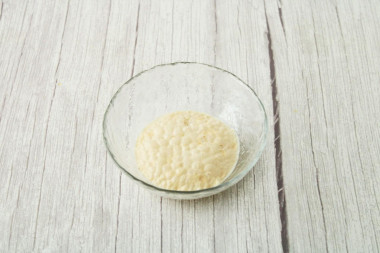
Heat the milk slightly. In a small bowl, combine yeast, 1 tsp sugar and 50 ml milk, mix well. Leave the yeast to activate for 10-15 minutes. A foam cap should appear on the surface.
Step 3:
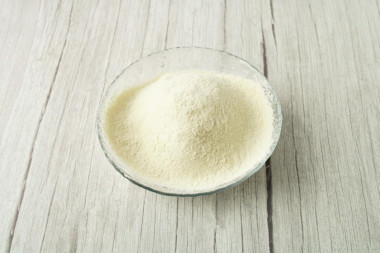
Sift the flour through a fine sieve. To do this, choose a wide container so that the flour does not fall on the table. Sifting will enrich the flour with oxygen, so that the dough will be more lush and airy, its ability to rise will increase.
Step 4:
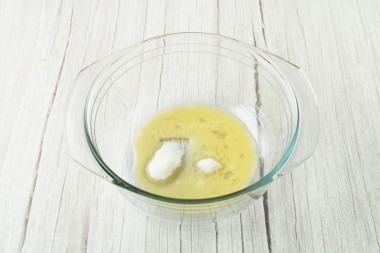
To knead the dough, take a stable, wide and deep bowl. Why this one? So that there is enough room for the dough to rise and so that it is convenient to knead it. Beat the egg with the remaining sugar and salt.
Step 5:
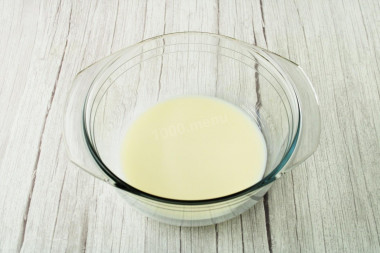
Pour in warm milk (100 ml), mix.
Step 6:
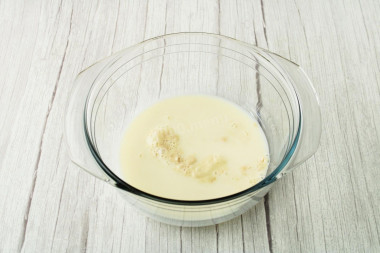
Add the activated yeast, stir.
Step 7:
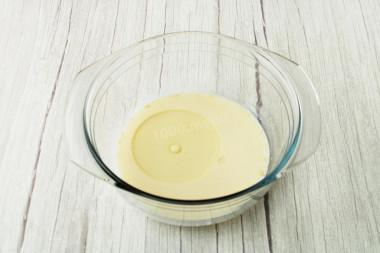
Pour in the vegetable oil, mix.
Step 8:
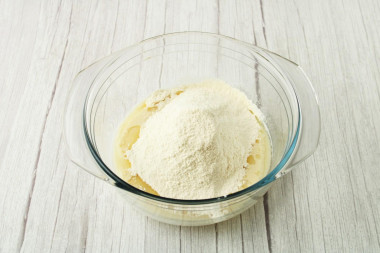
Add about 3/4 of the sifted flour. You can do this through a sieve, thereby sifting the flour twice.
Step 9:
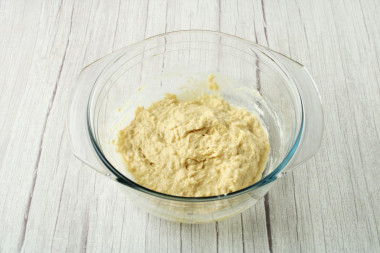
Mix the dough with a spoon. At this stage it is very viscous.
Step 10:
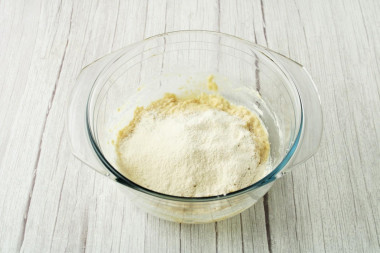
Add the rest of the flour in small portions, stirring each time and observing the consistency of the dough. It is important not to add too much flour so that the dough is not tight and dense. Keep in mind that you may take more or less flour than me. Therefore, focus on the consistency of the dough.
Step 11:
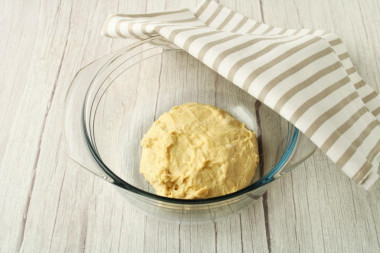
The dough should be soft, homogeneous, slightly sticky to the hands. Cover the bowl with the dough with a towel to prevent it from curling. Leave the dough in a warm place for 1.5-2 hours to rise. The time will depend on the ambient temperature and on the activity of yeast.
Step 12:
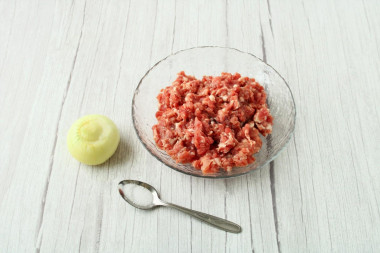
Prepare the filling. You can take any minced meat. I have mixed (pork and beef).
Step 13:
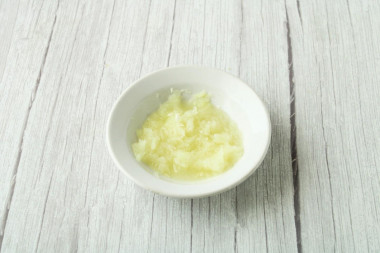
Pre-peeled onions wash, chop on a fine grater. You can finely chop the onion.
Step 14:
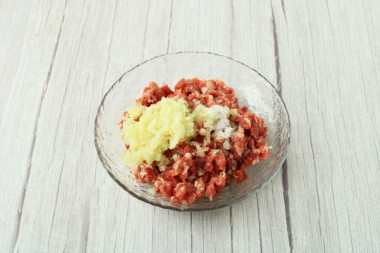
Combine minced meat with onion, salt, mix well. If desired, add any spices.
Step 15:
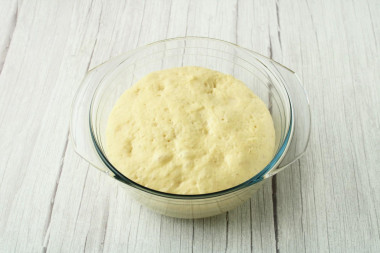
The dough came up, it increased in volume by 2-2.5 times. The readiness of the test can be determined by wrinkles and bubbles breaking through on the surface.
Step 16:
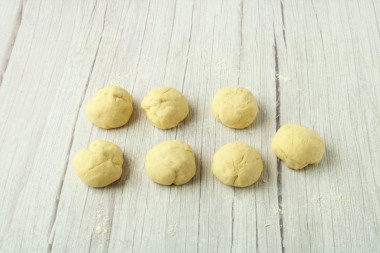
Gently knead the dough, put it on the table, sprinkled with flour. Divide the dough into equal parts, the number of which will depend on the desired size of the pies.
Step 17:
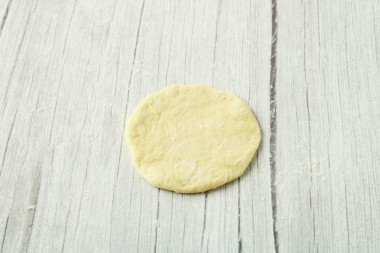
How to make open pies? Roll out each part of the dough into a round tortilla.
Step 18:
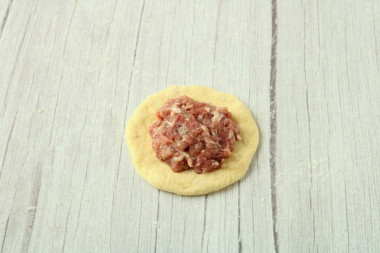
Put the meat filling in the middle of the tortilla.
Step 19:
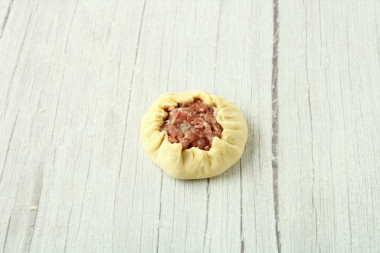
Lift the edges of the dough, pinching it from the sides with folds. Leave the middle of the filling open.
Step 20:
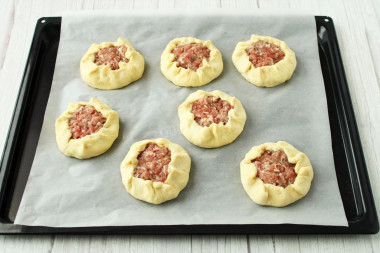
Place the pies on a parchment-lined baking sheet. Cover with a towel and leave for proofing for 10-15 minutes.
Step 21:
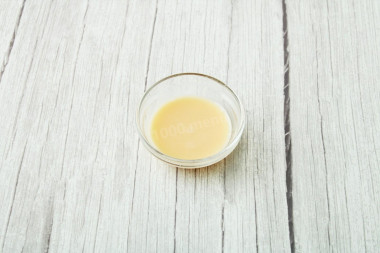
Beat the egg lightly with milk.
Step 22:
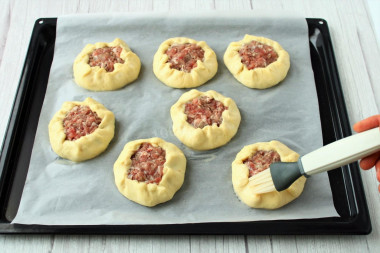
Grease the pies with egg-milk mixture before baking, so that they get a blush during cooking.
Step 23:
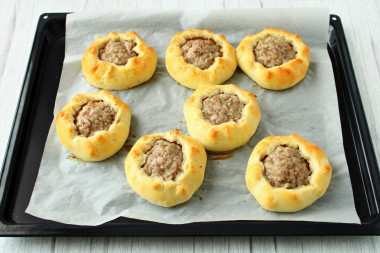
Bake meat pies in a preheated 180C oven until golden brown for 20-25 minutes.
Step 24:
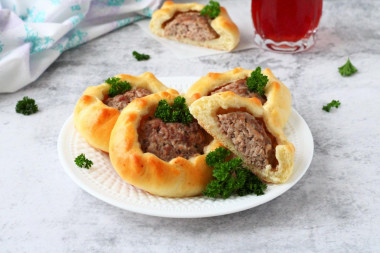
Let the finished pastries cool down a little and serve. Bon appetit!
So that the oven has time to heat up to the desired temperature, turn it on in advance (10-20 minutes before the start of cooking).
Keep in mind that everyone's ovens are different. The temperature and cooking time may differ from those specified in the recipe. To make any baked dish successful, use useful information about the features of ovens !
Make it a rule that the amount of flour is never determined in advance when preparing flour and bread products! This indicator will always fluctuate, since flour can be of different humidity, differ in the degree of grinding and the level of gluten, and other indicators, which inevitably affects its ability to bind to the liquid mixture in the dough. Since it is impossible to make a laboratory test at home to determine all the parameters and indicators of flour, we recommend acting on the principle of "flour in water", that is, take liquids exactly according to the recipe, and add flour to the liquid component not all at once, but in parts, achieving the desired consistency (while flour may take a little more or on the contrary, less than in the recipe). Thanks to this technique, the proportions of the ingredients are more accurately preserved and the quality of the dough is not lost.
Caloric content of the products possible in the composition of the dish
- Whole cow's milk - 68 kcal/100g
- Milk 3.5% fat content - 64 kcal/100g
- Milk 3.2% fat content - 60 kcal/100g
- Milk 1.5% fat content - 47 kcal/100g
- Concentrated milk 7.5% fat content - 140 kcal/100g
- Milk 2.5% fat content - 54 kcal/100g
- Chicken egg - 157 kcal/100g
- Egg white - 45 kcal/100g
- Egg powder - 542 kcal/100g
- Egg yolk - 352 kcal/100g
- Ostrich egg - 118 kcal/100g
- Granulated sugar - 398 kcal/100g
- Sugar - 398 kcal/100g
- Mixed minced meat - 351 kcal/100g
- Vegetable oil - 873 kcal/100g
- Salt - 0 kcal/100g
- Onion - 41 kcal/100g
- Wheat flour - 325 kcal/100g
- Dry yeast - 410 kcal/100g

